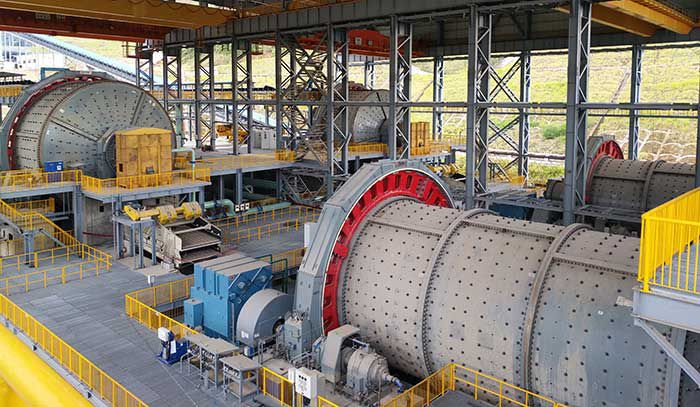Introduction
In the context of increasing energy consumption and declining ore grades, reducing engineering investments and operational costs has become a critical focus in the global mining industry. The trend toward large-scale, high-efficiency grinding equipment has intensified the demand for durable wear-resistant components. Among these, mill liners—critical for protecting grinding mill barrels and facilitating material comminution—are subjected to severe impact, abrasion, and cyclic stresses. However, traditional materials often fail to meet the longevity requirements of modern mills, leading to frequent replacements, increased downtime, and higher costs.

This study addresses these challenges by developing a high-performance chromium-molybdenum (Cr-Mo) alloy steel tailored for mill liners. By optimizing chemical composition, heat treatment processes, and mechanical properties, we aim to enhance wear resistance, impact toughness, and operational lifespan. Below, we present a comprehensive analysis of material design, production trials, and field applications.
1. Working Principles of Ball Mills and Semi-Autogenous Grinding Mills
Ball mills and semi-autogenous grinding mills are horizontal cylindrical devices that rotate to grind ore using steel balls or the ore itself as grinding media. Key differences include:
| Parameter | Ball Mill | Semi-Autogenous Grinding Mill |
|---|---|---|
| Grinding Media | Steel balls | Ore + 3% large steel balls (φ80–120 mm) |
| Filling Rate | Determined experimentally | 8%–12% |
| Primary Wear Mechanism | Abrasion + Impact | High-impact + Abrasion |
| Liner Hardness | HRC 48–52 | HRC 325–375 |
In ball mills, centrifugal force lifts grinding media, which then cascade to crush ore. Semi-Autogenous Grinding mills rely on ore self-breakage and limited media addition. Both systems impose distinct stresses on liners, necessitating material customization.
2. Wear Mechanisms and Key Influencing Factors
2.1 Wear Mechanisms
Mill liners endure three primary wear modes:
- Impact Fatigue: Cyclic loading from grinding media causes surface cracking and spalling.
- Abrasive Wear: Hard ore particles scrape and erode the liner surface.
- Thermal Stress: Friction-generated heat induces microstructural degradation.
Comparative wear rates between ball and semi-autogenous grinding mills:
| Mill Type | Dominant Wear Mode | Liner Lifespan (Months) |
|---|---|---|
| Ball Mill | Abrasion | 12–14 |
| Semi-autogenous grinding Mill | Impact + Abrasion | 10–12 |
2.2 Material Design Considerations
To mitigate wear, the Cr-Mo alloy steel was engineered with the following principles:
- High Hardness: Exceeding ore hardness (H<sub>liner</sub> > 0.8H<sub>ore</sub>).
- Balanced Toughness: Minimize crack propagation under impact (impact energy > 20 J/cm²).
- Thermal Stability: Resist softening at elevated temperatures.
3. Chemical Composition and Heat Treatment Optimization
3.1 Chemical Composition
The alloy’s composition was designed to synergize strength, wear resistance, and toughness:
| Element | Content (%) | Role |
|---|---|---|
| C | 0.45 | Enhances hardness; limits grain growth |
| Mn | 1.0 | Refines microstructure; lowers critical points |
| Si | 1.0 | Strengthens ferrite; improves淬透性 |
| Cr | 1.8 | Forms carbides; boosts wear resistance |
| Mo | 0.25 | Enhances淬透性; stabilizes carbides |
3.2 Heat Treatment Processes
Two tailored heat treatment cycles were developed for ball mill and semi-autogenous grinding mill liners:
Ball Mill Liners
- Austenitizing: 950°C ± 10°C → Water quenching.
- Tempering: 204°C ± 11°C → Air cooling.
- Stress Relief: 120–170°C for 2 hours.
Semi-autogenous grinding Mill Liners
- Austenitizing: 860°C ± 10°C → Air cooling.
- Tempering: 500°C ± 10°C → Air cooling.
- Stabilization: 300–350°C for 5 hours.
Resulting mechanical properties:
| Mill Type | Hardness (HRC) | Impact Energy (J/cm²) |
|---|---|---|
| Ball Mill | 48–52 | ≥20 |
| Semi-autogenous grinding Mill | 325–375 | ≥24 |
4. Production Trials and Quality Control
4.1 Trial Preparation
- Raw Materials: Recycled steel, cast iron, Ni, Co, and Mo alloys.
- Mold Design: Custom molds for casting complex geometries.
4.2 Process Optimization
Key steps included:
- Casting: Controlled pouring to minimize defects.
- Heat Treatment: Precise temperature and cooling rate management.
- Post-Processing: Stress relief and surface finishing.
Performance validation results:
| Sample | Hardness (HRC) | Impact Energy (J/cm²) | Lifespan (Months) |
|---|---|---|---|
| Ball-1 | 48 | 23 | 14 |
| Ball-2 | 50 | 21 | 14 |
| Semi-autogenous grinding-1 | 325 | 24 | 12 |
| Semi-autogenous grinding-2 | 335 | 24 | 12 |
5. Field Application and Performance
128 Cr-Mo alloy liners were deployed in industrial mills, demonstrating:
- Extended Lifespan: Ball mill liners lasted 14 months (+2 months vs. conventional), while semi-autogenous grinding mill liners achieved 12 months (+3 months).
- Reduced Failures: No cracking, spalling, or premature failures reported.
- Cost Savings: Lower replacement frequency and energy consumption.
6. Environmental and Economic Impact
The optimized Cr-Mo alloy steel offers:
- Resource Efficiency: Reduced material consumption by 15–20%.
- Emissions Reduction: Lower CO<sub>2</sub> emissions due to extended service intervals.
- Economic Benefits: 30% lower lifecycle costs compared to traditional liners.
7. Conclusion
This study successfully developed a high-performance Cr-Mo alloy steel for grinding mill components, achieving:
- Superior wear resistance and impact toughness.
- Extended operational lifespan under harsh conditions.
- Significant cost and environmental benefits.
Future work will focus on scaling production and exploring nano-structured coatings for further performance gains.
